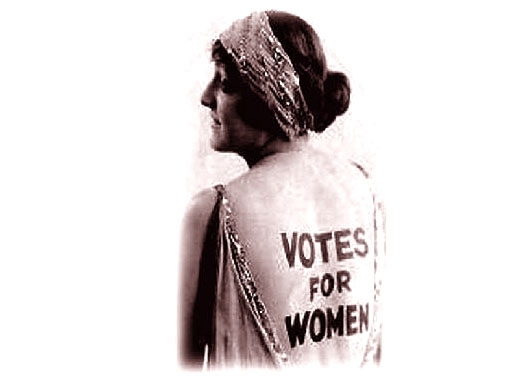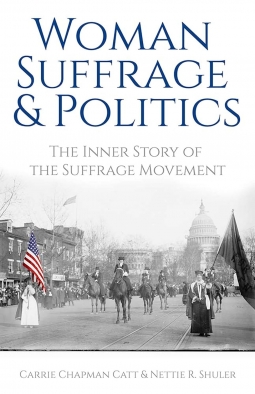|
Womens Suffrage Film Clips  This is an interesting article that indicates just how profoundly elections had changed after 1920, when women began to vote. Previously, when the voting booth was a gender-specific domain, the victory margins were seldom greater than 10%; yet, beginning with the 1920 presidential election and continuing through the election of 1936, dramatic differences could be seen between the winners and losers that had never existed in prior contests.
-From Amazon:

The journalist believed that the advent of radio broadcasting also played a contributing factor in these elections.
Read a 1951 profile of a future First Lady: the young Nancy Reagan.
Attached herein are two articles that tell the history of an organization that is still with us today: The League of Women Voters. At its birth, in 1869, it was a bi-partisan organization composed of women who made no stand as to which of the two political parties was superior - preferring instead to simply remind all ambitious candidates that American women were voiceless in all matters political and that this injustice had deprived them of a vibrant demographic group. Since women began voting in 1920, the League of Women Voters began promoting candidates from the Democratic party almost exclusively, while continuing to promote themselves with their pre-suffrage "bi-partisan" street hustle. No doubt, the League of Women Voters is an interesting group worthy of the news but it hasn't been bi-partisan in over seventy years. In the fourth decade of women's suffrage, researchers had discovered that there were more women than men listed on the voting registries. Republican Party executive Clare Williams noted:
"Women now hold the balance of power." Some well-chosen words by L.L. Jones, one of the many forgotten Suffragettes of yore, who looked longingly to new day:
"So far as political equality is concerned I believe I could adjust myself quite readily to a society governed by United States presidentesses, State governesses, and city mayorines, alderwomen, chairwomen, directrices, senatresses, and congresswomen, and I believe I should be just as happy if clergywomen preached to me, doctrices prescribed for me, and policewomen helped me across the street, and chuffeuresses ran the taxis which on rare occasions I can afford to take."
Read a 1918 article about the women's city.
"Unknown to the majority of women in this country, a steadily mounting feminist campaign is under way for Equal Rights for women under the Constitution. The average man will regard this statement with bewilderment." As 1922 came to a close, it seemed that some of the Suffragettes of the old-school had not lost their taste for violence, as the reader will discover in the opening paragraph of this one page article that primarily focused on the defeat of all but one of the women candidates who ran for Federal offices in the 1922 elections. "Thirty-three women running for Congressional and legislative seats in New York State went down to defeat" and there were no women elected or re-elected from any state for Congress that year. However, the state of Ohio elected it's first woman to that state's Supreme Court: Florence E. Allen (1884–1965). |
MORE ARTICLES >>> PAGE: * 1 * 2 * 3 * 4 * 5 * 6 * > NEXT |
|